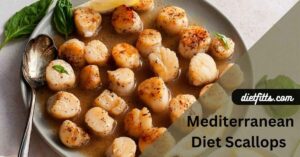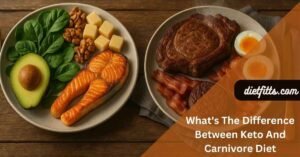Grocery Shopping List For Mediterranean Diet – Guide In 2024!

As a dietitian, I understand that grocery shopping can confuse many people. Some of my clients feel lost in the store and aren’t sure what foods to buy. With so many choices and tricky packaging, it’s difficult to tell which foods are healthy.
But don’t worry, I am going to discuss the simple steps for healthy grocery shopping. I’ll cover picking healthy foods, making a clever shopping list, and buying in bulk to cut down on trips to the store.
Table of Contents:
Creating A Healthy Shopping List – Tips For You!
A grocery list is like a helpful checklist for lots of people. It keeps you focused on what you need to buy and helps you remember everything. Research says that a list might even help you pick healthier foods when shopping.
But what exactly should you put on a “healthy” grocery shopping list?
- Focus on whole, nutrient-rich foods.
- Include plenty of vegetables and fruits.
- Choose protein sources like fish, eggs, beans, nuts, and seeds.
- consider these foods when making your grocery list.
- Divide your shopping list into sections.
- Separate vegetables into non-starchy and starchy categories.
- List fruits separately.
- Combine beans and grains into one category.
- Include nuts and seeds.
- Mention proteins.
- Add frozen items.
- Include dairy or non-dairy options.
- List drinks separately.
- Include condiments.
- Add any miscellaneous items you need.

Here’s an example of what you might put on a healthy grocery list:
1. Fruits: apples, blueberries, clementines, grapefruits, and avocados
2. Veggies (Nonstarchy): broccoli, asparagus, onions, spinach, peppers, and zucchini
3. Veggies (Starchy): sweet potatoes, baby red potatoes, and butternut squash
4. Beans and Grains: commonly include chickpeas, brown rice, black beans, and quinoa.
5. Proteins: eggs, canned salmon, chicken breast, and pea protein powder
6. Frozen foods: mixed berries and kale
7. Nuts and seeds: almonds, pumpkin seeds, and peanut butter
8. Dairy and substitutes: cashew milk, coconut milk, feta cheese, and Greek yogurt
9. Condiments: olives, sun-dried tomatoes, salad dressing, olive oil, pesto, and salsa are included.
10. Drinks: coconut water and sparkling water
11. Miscellaneous: coffee, dried fruit, dark chocolate, banana chips, and coconut flakes
Grocery Shopping List For Mediterranean Diet – What You Must Know!
1. Vegetables:
For those following the Mediterranean diet, having a weekly or twice-weekly vegetable shopping routine is important. If daily shopping isn’t possible. The goal is to purchase fresh, locally grown produce in season.
Also read: Can I Eat Honey On Mediterranean Diet? – Unlocking Sweet Secrets!
I suggest eating five to six different vegetables daily because each vegetable offers distinct health benefits.
Note: Pick fresh, organic, local, and seasonal veggies when possible.

You must have:
- Spring onion, onion
- Tomato (canned or fresh)
- Garlic
- Leafy greens vegetables
Also consider:
- Broccoli
- Eggplant
- Carrot
- Green beans
- Peas
- Mushroom
- Olives
- Bell peppers
- Zucchini
- Cucumber
- Celery
- Turnip
2. Dairy and Eggs:
In the Mediterranean lifestyle, people enjoy dairy products like cheese in moderation. It’s best to opt for traditional, unprocessed cheeses and avoid highly processed ones.
Here are some dairy options commonly enjoyed in the Mediterranean diet:
- Yoghurt (Greek yoghurt is preferred)
- Cheeses like feta, ricotta, fresh mozzarella, burrata, and Parmesan
- Eggs, preferably organic and free-range
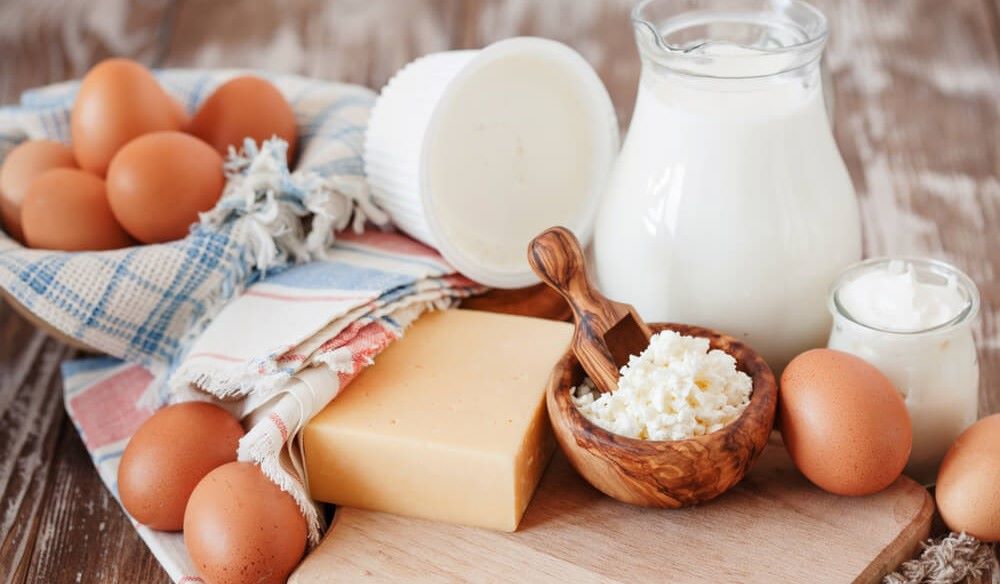
3. Fruits:
In the Mediterranean diet, skip processed sweets and opt for fruits instead. They can also sweeten cereal, yoghurt, and snacks. Choose locally grown fruits if possible, but frozen ones are also a good option as they retain nutrients.
Note: I suggest having three servings of fruit daily, with one serving being half a cup to one full cup. You can use it as a recipe for breakfast, lunch, dinner, and snacks between meals.
Also read: Can You Eat Sourdough Bread On Mediterranean Diet – Take The First Step Towards Healthier Lifestyle!
Here is a list of fruits commonly enjoyed in the Mediterranean diet:
- Apples
- Apricots
- Avocados
- Bananas
- Berries
- Cherries
- Dates
- Figs
- Grapes
- Lemons (used regularly)
- Melon
- Oranges
- Peaches
- Plums
- Pomegranates

4. Herbs and Spices:
Every grocery list needs spices, and Mediterranean food is both delicious and good for you because of them. Spices make plain vegetables tasty, so you don’t need to add too much salt. Plus, herbs have stuff in them that keeps you healthy and stops diseases.
Here’s a list of spices commonly used in Mediterranean cooking:
- Parsley
- Garlic
- Basil
- Cumin
- Mint
- Oregano
- Rosemary
- Nutmeg
- Bay leaf
- Cinnamon
- Pepper
- Dill
- Thyme

5. Beans and Legumes:
Legumes are a great way to get protein in the Mediterranean diet. They’re cheap, last a long time, and you can find them easily. Plus, they stay good for a while, so you can buy them once and have them for months.
However, legumes are full of good stuff like nutrients and protein. For instance, a study found that in Blue Zone areas, where people live a long time, those who eat a cup of beans daily tend to live the longest.
Also read: Mediterranean Diet Eating Out – A Comprehensive Guide!
Here are some types of legumes:
- Chickpeas (also called garbanzo beans)
- Lentils (black, red, green, and yellow varieties)
- Beans (black, white, and pinto)
- Kidney beans
- Black-eyed peas
- Humus
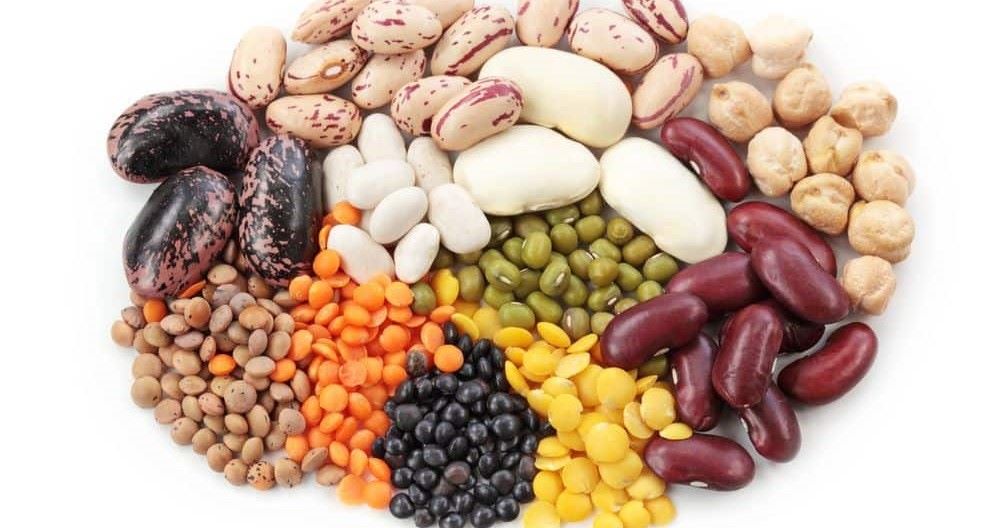
6. Whole Grains:
Another important part of the Mediterranean diet is whole grains. This means whole-grain bread, whole grains in salads, and whole-grain pasta. But why should you pick whole grains and avoid refined ones?
Whole grains are rich in fiber and nutrients like magnesium, potassium, and antioxidants. They help control blood sugar and pressure, aid in weight loss, and reduce heart disease risk. Studies show they’re linked to smaller waist sizes and better blood sugar and pressure levels.
Note: Try different types of whole grains to find what you like, and switch them up each week.
Here are some whole grains for your grocery list:
- Oats
- Brown rice
- Blugr
- Rye
- Barley
- Corn
- Buckwheat
- Couscous
- Quinoa
- Amaranth

Now, you have got the information regarding the “Grocery Shopping List For Mediterranean Diet“. For worldwide discussion visit this Reddit website.
7. Seafood:
Seafood is another good source of healthy fats in the Mediterranean diet, typically eaten once or twice a week. Fish high in omega-3 fatty acids like salmon, sardines, herring, mackerel, lake trout and tuna are the best choices.
Note: Get to know how to spot fresh fish. Opt for fish with plenty of omega-3 fatty oils for their health advantages. If you use canned fish then consider low sodium.
Here are some types of fish to add to your grocery list:
- Salmon
- Tuna
- Shrimp
- Crab
- Oysters
- Mackerel
- Sardine
- Trout
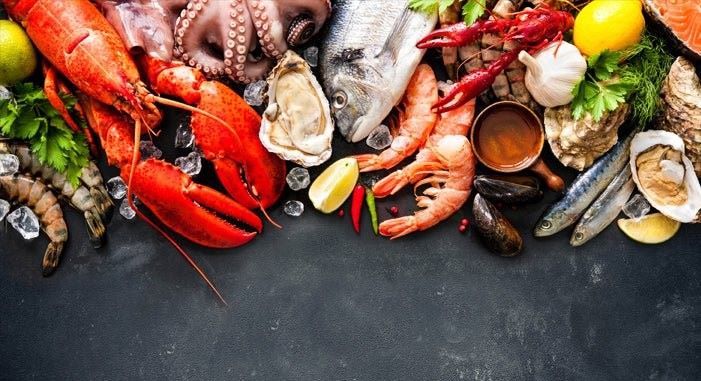
Also read: Is Shrimp On The Mediterranean Diet – Find Out How!
8. Nuts and Seeds:
Nuts and seeds are a fast and filling snack. Just a handful can satisfy your hunger. You can enjoy nuts and seeds daily. Studies suggest that eating nuts may lower your risk of heart disease and help you live longer. They provide healthy fats, fiber, and protein.
Here’s how to include nuts in your daily meals:
- Enjoy a mix of nuts as a snack.
- Mix them into dips or pesto sauces.
- Sprinkle them on salads.
- Add them to breakfast cereal.
- Sprinkle them over desserts.
- Make nut butter.
| Types of Nuts | Types of Seeds |
| Walnuts | Chia |
| Almonds | Flax |
| Pine nuts | Hemp |
| Cashews | Pumpkin |
| Hazelnuts | Sunflower |
| Peanuts | Poppy |
| Apricots | Sesame |

Note: Store various nuts in small bags or containers and freeze them to maintain freshness for an extended period.
Also read: Is The Mediterranean Diet Gluten Free – Discover The Truth!
8. Healthy Oils/Fats:
We primarily use high-quality extra virgin olive oil in our Mediterranean cuisine. We prefer Greek extra virgin olive oil, which is made from organically grown and processed Koroneiki olives.
A study of over 7,000 people on a Mediterranean diet, which included extra-virgin olive oil for five years, found a 30% lower risk of heart disease, slower cognitive decline, and better weight control.
Extra virgin olive oil is used in the Mediterranean diet in various ways:
- Drizzled generously over salads and used in salad dressings
- Used for high-heat cooking
- Used for sautéing
- Used for roasting
- Used for marinating meat and seafood
- Added to dips, such as hummus
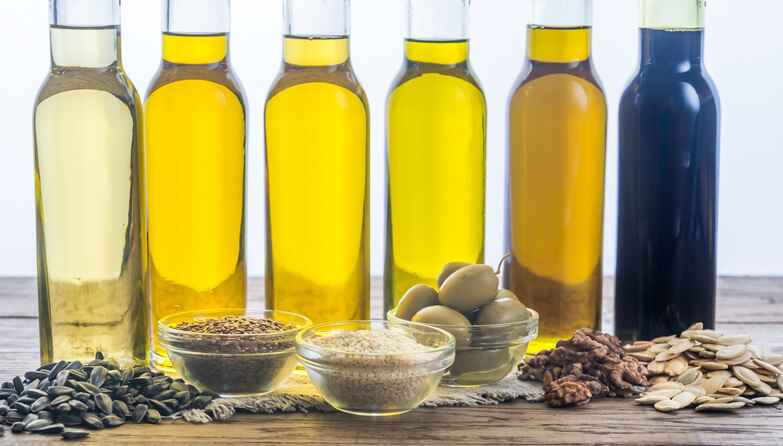
Here are some tips for buying and storing extra virgin olive oil:
- Choose extra virgin olive oil for uncooked uses like salads or dipping bread.
- Pay attention to the oil’s smoke point when cooking. Olive oil has a high smoke point of about 410 degrees Fahrenheit.
- Opt for olive oil in a dark-coloured bottle.
- Keep the oil in a cool, dark place to preserve its freshness.
- Make sure the lid is tightly closed to avoid oxidation.
- Use olive oil in moderation
Also read: Mediterranean Diet Beverages – Start Nourishing Your Body With Every Sip!
9. Meat:
In the Mediterranean diet, meat was traditionally eaten only once a week, typically on Sundays or special occasions. Common meats include:
- chicken
- beef
- pork
- lamb
- Ground turkey
- Beans are often preferred over meat for protein.
Chicken and ground turkey are high-quality proteins eaten occasionally in the Mediterranean Diet. Every part of the chicken, including the bones, is used, with broth made from them.

Note: You should Eat meat in small portions. Used it as a condiment rather than a main dish. Choose cooking methods like roasting, steaming, or sautéing instead of deep frying.
Frequently Asked Questions:
1. What is the staple food of the Mediterranean diet?
Most meals included in this diet are veggies, fruits, whole grains like bread, pasta, rice, and extra virgin olive oil. Unlike certain diets, the Mediterranean diet isn’t very strict. It can differ for everyone, and many might not know much about it.
2. Is It Okay to Use Canned Ingredients?
Yes, it’s okay to use canned ingredients. They’re easy to use and last a long time. Select canned items with no added sugar or excessive salt. Before use, rinse canned vegetables to reduce their salt content.
3. Can I Substitute Ingredients in the Mediterranean Diet?
Yes! Feel free to make ingredient substitutions based on what you prefer or if you have specific dietary requirements. For example, if you’re a vegetarian, tofu can be used as an alternative source of protein in your meals.
Conclusion:
The Mediterranean diet promotes a flexible and balanced approach to healthy eating, centered around whole, nutrient-rich foods. It offers a sustainable and enjoyable way to support overall health by prioritizing fresh, seasonal ingredients and simple cooking methods.
Customize your grocery list to suit your preferences and explore the diverse flavours this diet offers.

Hi! I’m Olivia Steeve, a certified nutritionist with over 11 years of experience in the field of diet and nutrition. At DietFitts, I focus on providing scientifically-backed, practical advice to help individuals achieve their health and fitness goals through balanced eating. I share insights, tips, and personalized guidance to help you make healthier choices and live your best life.

